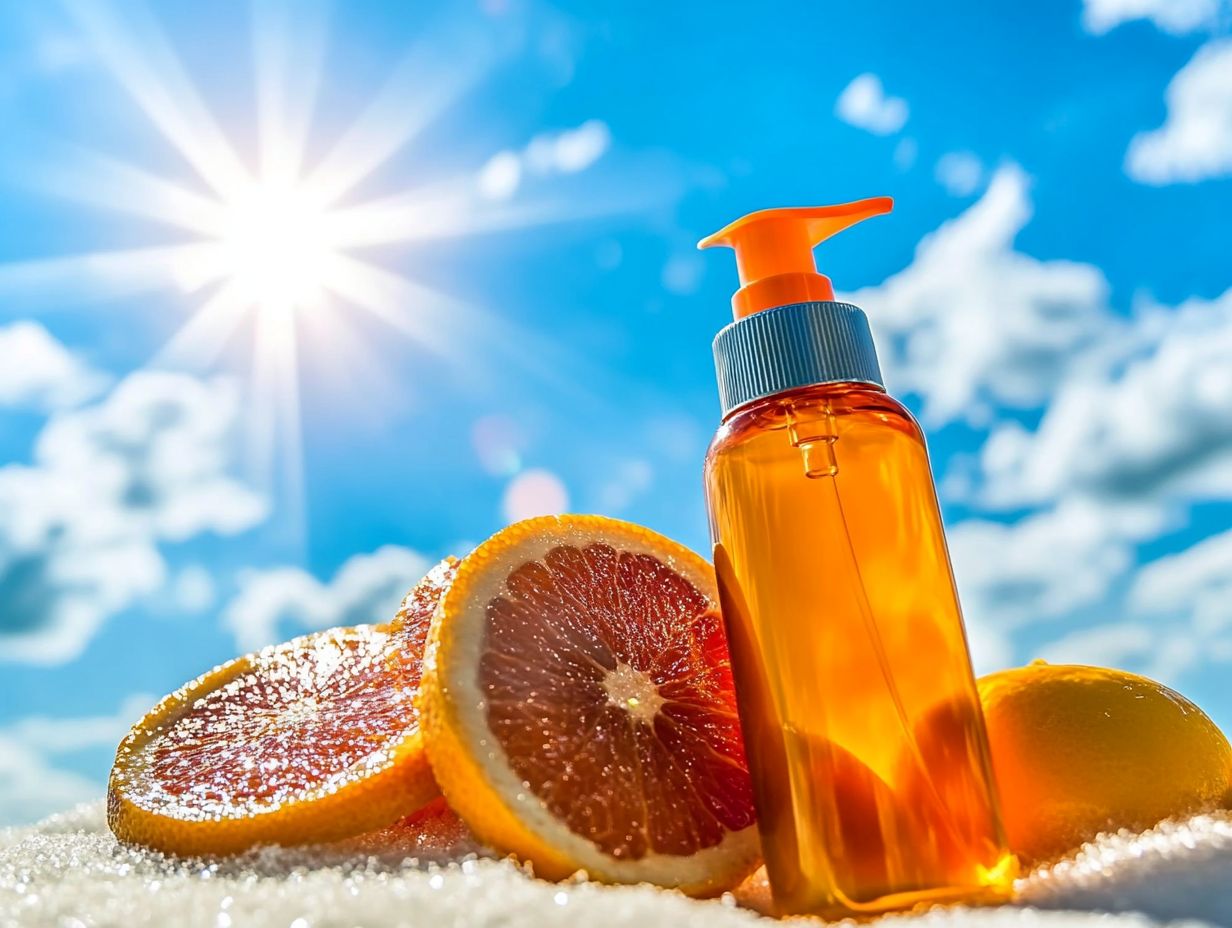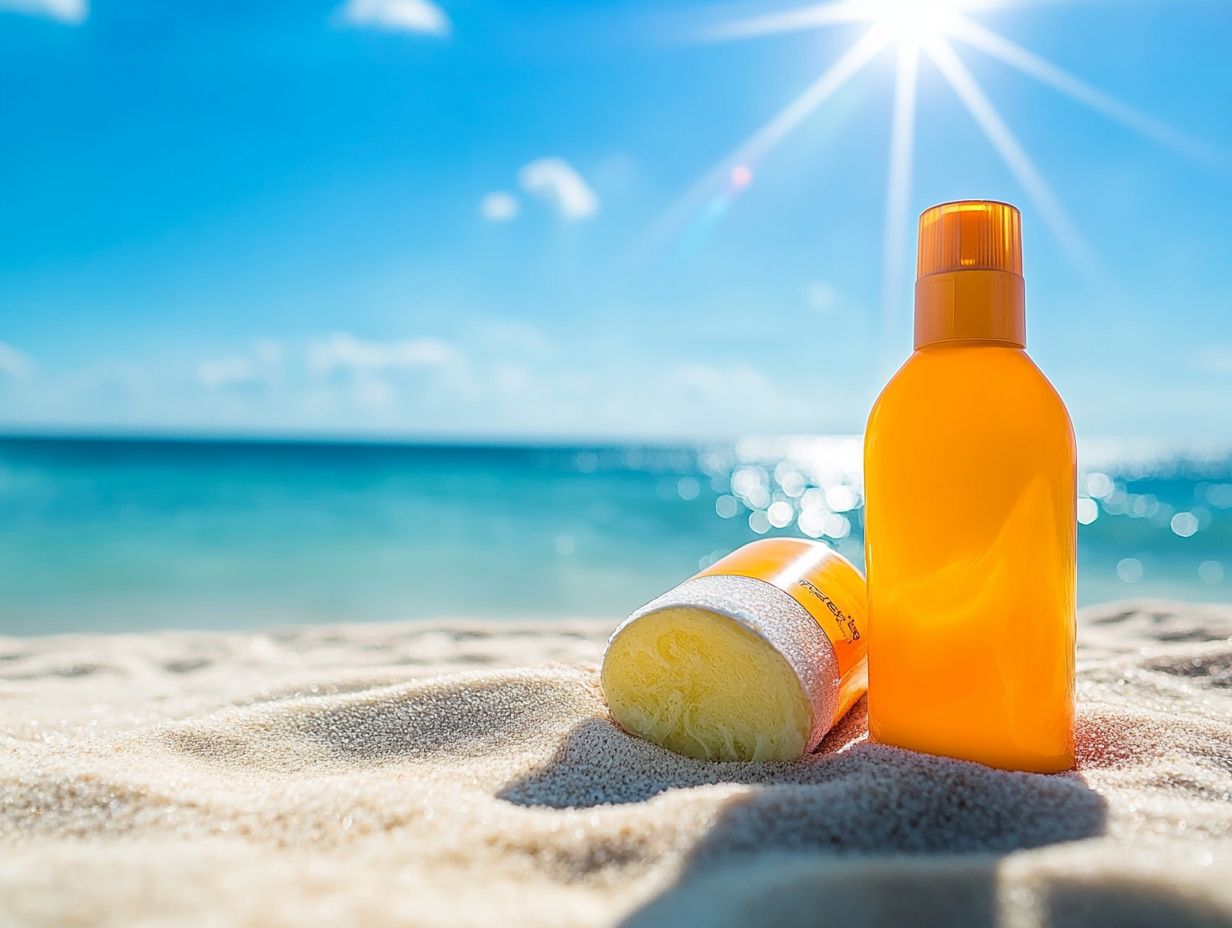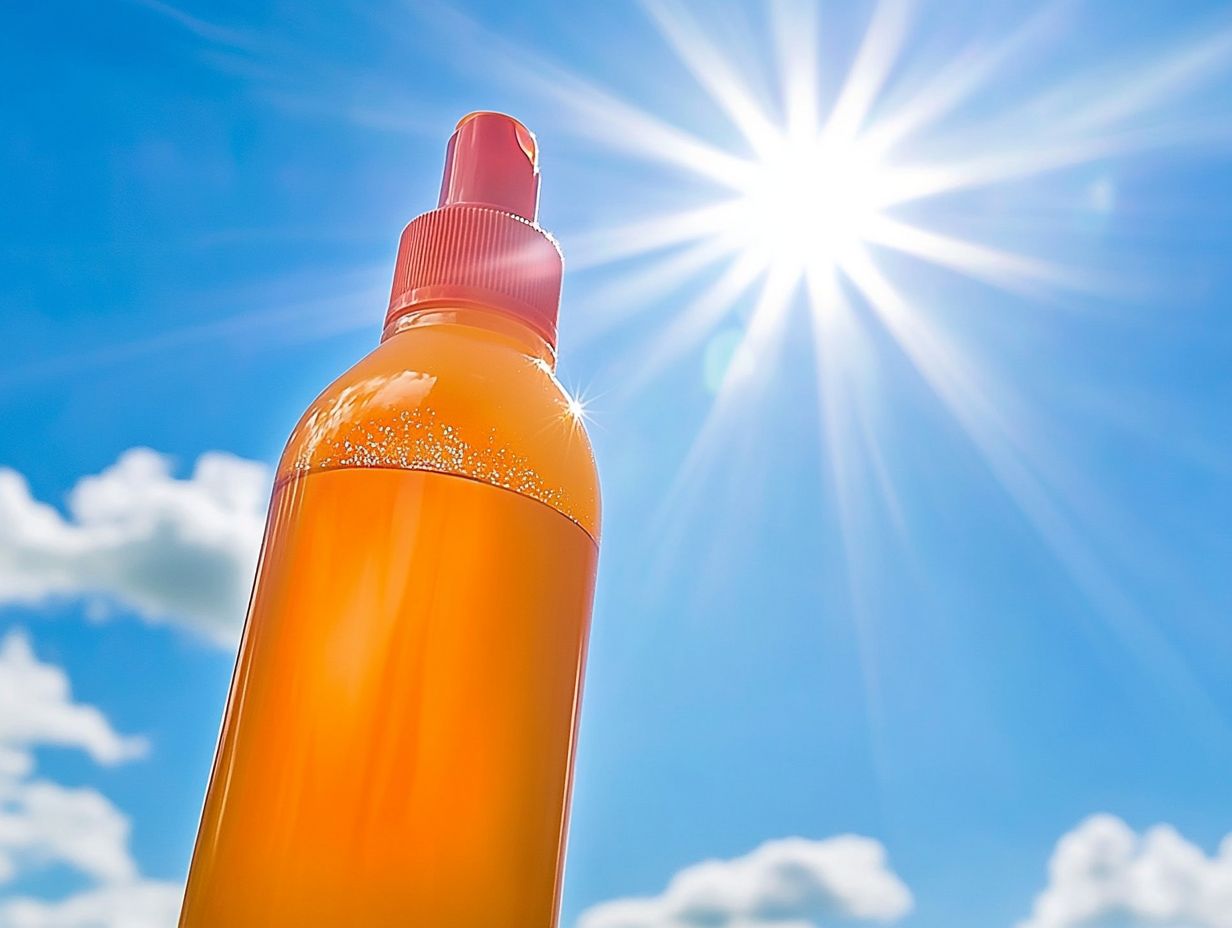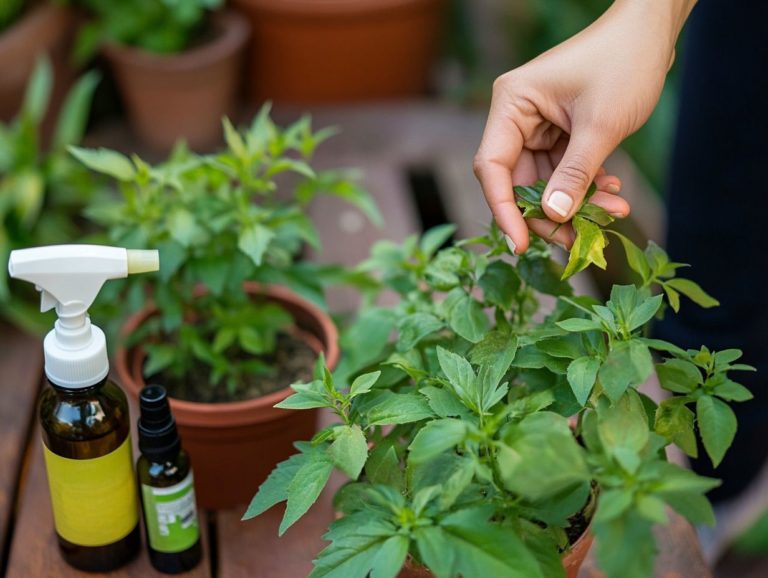Signs of Overexposure to Direct Sunlight
Sun exposure is vital for your health, especially when it comes to producing vitamin D. However, overindulging can result in serious consequences.
This guide will help you find the perfect balance between basking in the sun and avoiding its risks. You ll learn to recognize the signs of overexposure, such as painful physical symptoms, and understand the potential for long-term skin damage. This knowledge is essential for anyone who enjoys the outdoors.
You ll also find practical tips on how to protect yourself and effective treatments for when you ve had a bit too much sun. Stay informed and safeguard your skin while relishing your time outside!
Contents
- Key Takeaways:
- Understanding Sun Exposure
- Signs of Overexposure to Direct Sunlight
- Health Risks of Overexposure to Sunlight
- How to Protect Yourself from Overexposure
- Treating Overexposure to Sunlight
- Frequently Asked Questions
- What are the signs of overexposure to direct sunlight?
- How can I tell if I’ve had too much direct sunlight?
- What should I do if I think I’ve been overexposed to direct sunlight?
- Can overexposure to direct sunlight lead to long-term health problems such as skin cancer?
- Are there any groups of people who are more susceptible to overexposure to direct sunlight, such as those with lower melanin levels?
- What are some preventative measures I can take to avoid overexposure to direct sunlight and protect my skin?
Key Takeaways:

- Stay aware of physical signs of overexposure to direct sunlight, such as sunburn, blistering, and heat exhaustion.
- Overexposure to sunlight can lead to serious health risks, including skin cancer, premature aging, and eye damage.
- Prevent overexposure by regularly applying sunscreen, seeking shade, and wearing protective clothing when spending time in the sun.
- Act now to protect your skin and enjoy your time in the sun safely!
Understanding Sun Exposure
Understanding sun exposure is vital for maintaining your skin’s health and preventing photoaging skin damage caused by the sun’s rays while also reducing the risk of skin cancer. It s essential to recognize how UV radiation, which includes harmful rays from the sun, can impact your skin, manifesting in various ways like sunburn, inflammation, and dehydration.
Dermatologists stress the importance of hydration and sun protection to preserve skin quality, particularly for those with varying skin tones. Understanding how melanin works helps you assess your unique risks in the sun.
Importance of Sunlight and Vitamin D
Sunlight plays a crucial role in producing vitamin D, a vital nutrient for your overall health and skin quality. This essential nutrient not only bolsters bone strength and immune function but also contributes to a radiant complexion. When your skin is exposed to sunlight, it synthesizes vitamin D, enhancing skin wellness and potentially lowering the risk of certain skin disorders.
Your individual response to sunlight can vary significantly, largely depending on your skin’s melanin levels. If you have higher melanin content, you might enjoy a natural shield against ultraviolet rays, but you still need adequate sun exposure to maintain sufficient vitamin D levels.
Investing in skincare that nurtures this balance is key to preserving both your health and appearance.
Signs of Overexposure to Direct Sunlight
Recognizing the signs of overexposure to direct sunlight is crucial for preventing long-term skin damage and preserving your skin’s quality. Symptoms like sunburn, lesions, and early signs of photoaging think wrinkles can manifest after excessive UV radiation exposure. This underscores the importance of vigilant skin protection.
If you notice signs like inflammation, blistering, or changes in skin tone, act quickly to reduce harm.
Physical Symptoms to Watch Out For

Physical symptoms of sun overexposure can profoundly affect your skin quality and overall health, with sunburn being your most immediate concern.
The repercussions go beyond that initial burning sensation. You may also find yourself grappling with painful blisters, which form when the outer layer of your skin endures severe damage, causing fluid to accumulate beneath the surface. A rash might develop, marked by redness, swelling, and irritation, making even everyday activities uncomfortable.
Inflammation often arises as your body s natural response to injury escalates, potentially impacting deeper layers of your skin. These conditions not only compromise your appearance but can also lead to long-term skin health issues, such as accelerated aging or an increased risk of skin cancer.
Therefore, if you experience persistent symptoms, it’s essential to seek professional medical advice and appropriate treatment.
In conclusion, protecting your skin from sun exposure is crucial for maintaining its health. Regular skin checks and timely action can significantly reduce your risk of damage. Take charge of your skin health today!
Health Risks of Overexposure to Sunlight
Overexposure to sunlight can lead to serious health risks. This includes skin cancer and accelerated skin aging, which affect both your skin’s appearance and health.
Prolonged UV exposure causes significant skin damage, including lesions and changes in skin tone. These factors heighten the risk of developing malignant conditions.
Dermatologists stress the need for effective prevention strategies. This helps protect your skin health and reduce risks.
Potential Skin Damage and Diseases
UV exposure can cause severe skin conditions. These include skin cancer, skin aging from sun exposure, and dark spots.
Many people overlook the harmful effects of the sun’s rays. Chronic exposure can lead to serious issues like skin cancer, which presents significant health risks.
Signs of sun damage, such as dark spots, wrinkles, and leathery texture, indicate your skin is suffering. To combat these dangers, apply broad-spectrum sunscreen with an SPF of at least 30.
How to Protect Yourself from Overexposure
Protecting yourself from excessive sunlight is crucial for healthy skin. Use effective strategies like:
- Applying sunscreen regularly
- Wearing protective clothing
- Seeking shade during peak hours
Experts recommend broad-spectrum sunscreen with at least SPF 30. Integrating these sun safety practices can significantly reduce your risk of skin damage.
Preventive Measures and Sun Safety Tips

Implementing preventive measures and sun safety tips is essential for protecting your skin from harmful UV radiation and minimizing the risk of damage.
To effectively safeguard your skin health, start by applying a broad-spectrum sunscreen with a high SPF before stepping outdoors. Ensure you cover all exposed areas evenly.
Complement this with appropriate clothing think long-sleeved shirts, wide-brimmed hats, and UV-blocking sunglasses to create a robust protective barrier against the sun’s rays.
Remember to stay hydrated throughout the day; this not only supports your overall skin vitality but also combats the drying effects of sun exposure. Lastly, don t forget to schedule regular dermatology check-ups. These visits can help you detect early signs of skin issues, allowing for prompt intervention and ongoing monitoring of your skin health.
Treating Overexposure to Sunlight
Treating overexposure to sunlight effectively requires a thoughtful blend of home remedies and medical treatments that promote healing and alleviate discomfort.
For mild sunburn, soothing options like aloe vera and nourishing moisturizing oils can offer significant relief. However, in more severe cases, seeking medical intervention becomes essential.
By understanding the right approach for different levels of sun damage, you can ensure optimal recovery and restore the quality of your skin.
Home Remedies and Medical Treatment Options
When it comes to sunburn and skin damage, you can quickly find effective home remedies and medical treatment options at your disposal. These include soothing applications, hydration, and topical treatments like retinoids and antioxidants.
Aloe vera truly shines among these remedies. It’s celebrated for its remarkable cooling and anti-inflammatory properties, making it a top choice for alleviating that uncomfortable burn.
Staying hydrated is essential in your recovery journey. Drinking enough water can significantly speed up the healing process.
If you re experiencing severe pain or blistering, medical treatments may be necessary. Consulting a healthcare professional is crucial for the right guidance.
Gentle moisturizers and ingredient-rich products help your skin heal faster and reduce long-term damage. Incorporating these can ensure a soothing experience.
Frequently Asked Questions
What are the signs of overexposure to direct sunlight?

Signs of overexposure to direct sunlight include sunburn, redness and irritation of the skin, dehydration, headache, dizziness, and fatigue.
How can I tell if I’ve had too much direct sunlight?
If you start feeling excessively hot, have a headache, feel nauseous or dizzy, or have intense thirst, you may have had too much direct sunlight exposure.
What should I do if I think I’ve been overexposed to direct sunlight?
If you think you ve had too much sun exposure, immediately seek shade and cover up with protective clothing. Drink plenty of water and apply aloe vera to any sunburned areas.
Can overexposure to direct sunlight lead to long-term health problems such as skin cancer?
Yes, overexposure to direct sunlight can lead to long-term health problems like premature aging of the skin, damage to the eyes, and an increased risk of skin cancer.
Are there any groups of people who are more susceptible to overexposure to direct sunlight, such as those with lower melanin levels?
Yes, individuals with fair skin, children, and the elderly are more susceptible to overexposure to direct sunlight. Those taking certain medications or with a history of skin cancer may also be at greater risk.
What are some preventative measures I can take to avoid overexposure to direct sunlight and protect my skin?
To avoid overexposure to direct sunlight, wear sunscreen with a high SPF, seek shade during peak sun hours, wear protective clothing, and stay hydrated by drinking plenty of water.






